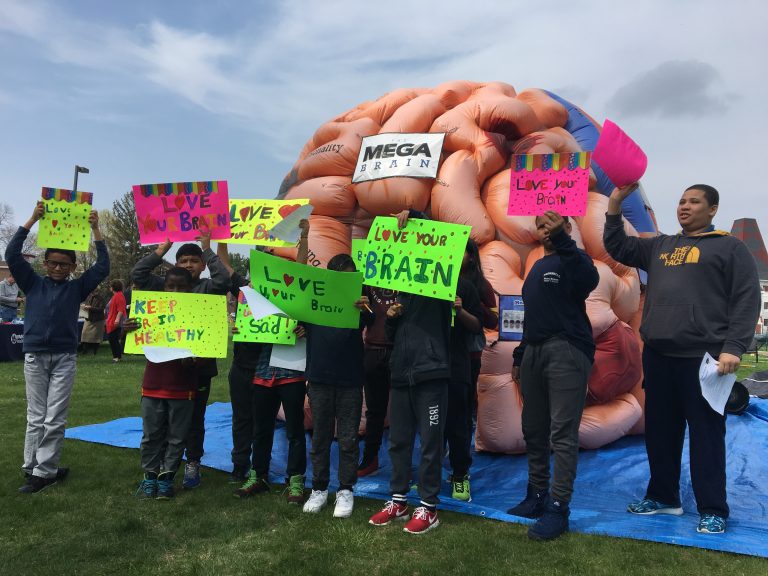
Students in front of the Mega Brain
FY 2026 Federal Budget Cuts: What SAMHSA, CDC, and Prevention Advocates Need to Know
The Trump Administration’s recently released FY 2026 “skinny budget” has sent shockwaves through the substance use prevention and public health communities. With proposed deep cuts to the Substance Abuse and Mental Health Services Administration (SAMHSA) and the Centers for Disease Control and Prevention (CDC), local coalitions, public health departments, and educators need to understand what this means — and how they can prepare.
In this post, we’ll break down:
What’s in the budget proposal
Which prevention programs are on the chopping block
Where and how you can still apply for opioid response and prevention grants
What public health leaders should watch for in the months ahead
What’s in the FY 2026 Budget Proposal?
The FY 2026 skinny budget proposes:
Over $1 billion in cuts to SAMHSA
Over $3.5 billion in cuts to the CDC
Elimination or consolidation of key prevention programs the administration deems “too small to have national impact” or duplicative
Programs at risk include:
Sober Truth on Preventing Underage Drinking (STOP Act) grants
Strategic Prevention Framework (SPF) grants
Tribal Behavioral Health Grants
Minority AIDS and Federal Drug-Free Workforce programs
CDC’s Excessive Alcohol Use, Smoking, and Chronic Disease Prevention programs
While the skinny budget is just an opening proposal, it sends a clear signal: prevention programs are under threat.
Congress Has the Final Say
It’s crucial to remember: Congress controls the purse strings. The President’s budget serves as a blueprint, but lawmakers can (and often do) adjust, reject, or restore funding levels during the appropriations process.
Advocacy organizations like CADCA, NASADAD, and the National Prevention Network will be key players in influencing this process. Public health advocates should stay tuned for legislative alerts and updates as negotiations unfold.
Where and How to Apply for Prevention and Opioid Grants
Even as federal budget debates continue, several major funding streams remain available:
State Opioid Response (SOR) Grants
Who can apply? State agencies (Single State Agencies for substance abuse)
What they fund: Opioid and stimulant prevention, treatment, recovery services
How to access: Local organizations should contact their state agencies to learn about sub-grant opportunities. States apply directly to SAMHSA via Grants.gov.
Where to learn more: SAMHSA SOR Grants Overview
SUPTRS Block Grant (formerly SAPT Block Grant)
Who can apply? State agencies receive funding; local coalitions access funds through state-managed sub-grants
What they fund: Broad substance use prevention, treatment, recovery programs
Key detail: States must spend at least 20% on primary prevention
Where to learn more: SAMHSA Block Grant Overview
If you are a local coalition, community provider, or educator, get familiar with your state’s funding process and build relationships with the officials managing these grants.
Strategies for Public Health Leaders
Here’s how you can prepare:
Document your program impacts now. Gather data, success stories, and testimonials showing why your work matters. These will be essential if advocacy efforts ramp up.
Stay informed. Follow updates from national prevention organizations, your state agencies, and congressional committees overseeing HHS appropriations.
Prepare for funding shifts. Begin identifying alternative funding sources (state, local, philanthropic) and consider how your coalition or program can adapt if federal discretionary grants shrink.
Collaborate regionally. Strength in numbers! Work with neighboring coalitions, public health departments, and educational institutions to share resources and advocate for shared priorities.
What to Watch For Next
Release of the detailed FY 2026 budget justification (expected later this month)
Congressional budget hearings and negotiations (summer/fall)
National advocacy campaigns and alerts
State-level planning for federal funds and opioid settlement resources
We will continue to monitor and report on these developments.
Join the Conversation
How are you preparing for potential budget cuts? What prevention priorities matter most in your community? Share your thoughts in the comments or connect with us on LinkedIn to keep this important dialogue going.
Together, we can navigate these uncertain times and continue building healthier, drug-free communities.
